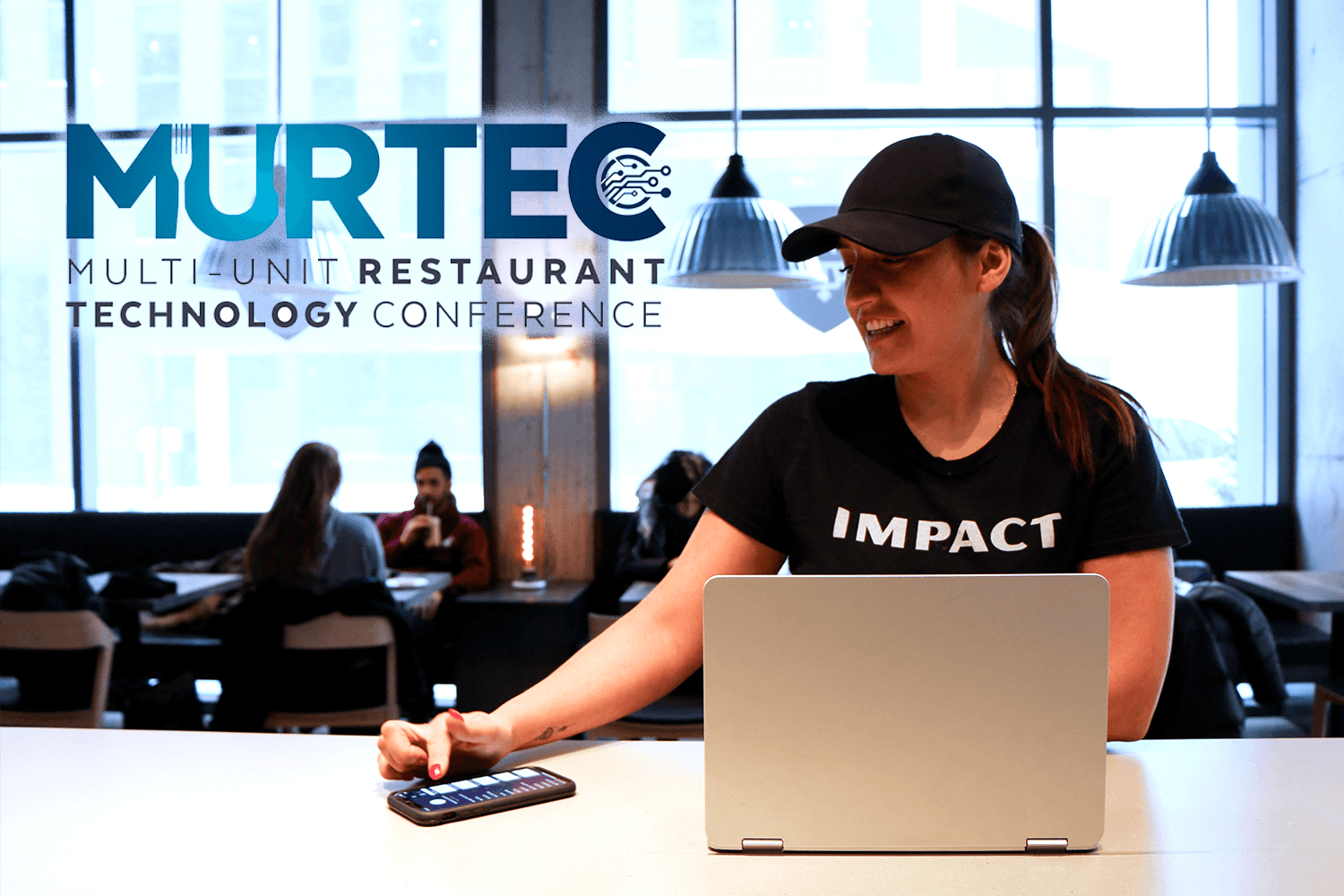Murtec, or the “Multi-Unit Restaurant Technology Conference,” is the place to be for all things (you guessed it) restaurant tech. Getting a pulse on this year’s event gives us insight into the trends in the landscape as it stands today.
To get an inside look at the trends storming the multi-unit restaurant tech industry, I spoke with Martin Perak of Speakap, who was a panelist at Murtec 2019 and has been in the restaurant tech industry for over a decade. Now, Perak balances his passion for the industry with his expertise in technologies to drive Speakap’s focus in the space. The workforce communications technology provider services more than 350 global brands, providing communications tools for players like McDonald’s, Dominos, and Marriott.
I initially asked Perak about his experience with Murtec over the years, to set the stage for the new trends covered in 2019.
“When you look at Murtec over the past few years, the landscape has changed. Loyalty programs were a hot topic 4-5 years ago. Last year, the big trend was data and analytics. This year, Murtec was focused on innovation and using AI to leverage the data we’re collecting to make informed business decisions.” — Martin Perak, Sales Director, Speakap
Three Major Insights from Murtec 2019
1. Business decisions are now driven by data, and AI is here to help

Over the past few years, the collection of data and monitoring of performance has become more important in the restaurant space, but only recently has it become the main factor in decision making. Evident in this year’s program, with session titles overrun with “Ai” and “data-driven” focused titles, underlining the importance of data in restaurant operations.
Yet, AI is emerging in the restaurant tech space in more ways than just one.
With voice-recognition assistants like Amazon Alexa, and facial recognition technologies becoming accessible to nearly every North American household, restaurants must learn how to capitalize on these technologies to improve the diner experience.
“Looking at the agenda, there was a lot of attention spent on the future. The scripted part of the conference focused on on-demand services, Share-of-Stomach vs. Wallet Share, voice bots and voice assistance.” — Chris de Jong, Director of Brand & Comms, 7shifts
2. Deploying tech solutions through a cloud-based platform is not as involved as it used to be

The technology powering the multi-unit restaurant industry is becoming more accessible than ever, and the movement towards more unification of technology systems was a big theme at this year’s Murtec. As Perak mentioned, this year’s focus on leveraging actionable data alludes to the need for more accessibility and better integration of data systems to really make an impact in business operations.
Corie Capodiferro of Speakap further explained that with 44% of restaurants reporting that delivering technology projects faster is a high concern, one key consideration must be the flexibility of technology. Having multiple locations and a predominant non-desk workforce, there are several key benefits to moving systems to the cloud to distribute, interact with, and disseminate actionable data.
A unified cloud-based approach provides security, privacy, and control, as well as:
- Flexibility to scale resources
- Business continuity and disaster recovery capability
- Minimization of capital expenditure and lower maintenance costs
- Increased collaboration with mobile and interactive solutions
- Document control with files stored centrally creating one source of truth through all layers of the business
- Improved competitiveness through adoption of enterprise-class technologies at a fraction of the cost and time to implement
The Murtec 2019 program is steeped with cloud-based infrastructure, and even Wayne Pederson, CTO of Fazoli’s, spoke at Murtec on mastering cloud migration, and states that roughly 60% of restaurants say moving their POS to the cloud is a top concern.
3. Restaurants are beginning to accept that communication-specific solutions are key for engagement and retention
It’s a lack of communication that’s driving the massive 73% turnover rate in the restaurant industry—and tech companies are on the move to fill that need. A lot of the technology being developed today hones in on that weakness, and the market of communication solutions is growing. In Perak’s eyes, restaurants have only recently begun to accept these tools as viable solutions to the problem.
By leveraging technology, restaurant operators can improve communications that in turn accelerate staff on-boarding, daily efficiencies and increase average customer ticket size. Whether you have 25 or 1,000 locations, every company faces the challenge of directly communicating and engaging with frontline employees. Even more importantly, companies must equip them with the tools, information and knowledge to best serve guests, and empower and retain top performers.” -Martin Perak
A highlight of Murtec 2019 was the discussion of the critical need for restaurant communication solutions.
“Murtec attracts large enterprise restaurant groups with many smart restaurateurs, who deal with hundreds of locations and a fairly disengaged workforce, struggling to disseminate information. For them culture and worker experience were the number one answer to this problem. There were examples of how powerful employee engagement is in reducing turnover, decreasing costs, and increasing bottom line. Stronger culture was tied back to employee engagement data that helped restaurateurs systemize the experience and optimize it.” — Chris de Jong
Yet, what exactly does it mean when we talk about communication tools? Each company may have a different perspective.
“In 70% of employee surveys, employees ask for better communication. But everyone comes to Murtec with a different agenda—is communication access to training and on-boarding resources? Messaging with coworkers? Is it disseminating information from corporate down to the team level, or more of a ground-up approach?
Speakap, for example, strives to take a holistic approach to make information accessible to all employees and connect them to their team—transparency.” —Martin Perak
A major factor in communication, Perak notes, is the onboarding and training of employees. The way onboarding is done has changed drastically over the years as the technology that facilitates it evolves, and as younger generations enter the workforce.
However, communication extends far beyond onboarding training and team chat—communication about career growth and opportunity is another major part of ensuring your workforce is not only engaged, but retained long-term.
“Turnover comes down to successful onboarding, engagement, information access, and ongoing training. Another important factor in terms of communication is offering opportunity. How are you leveraging technology to develop a career roadmap for someone who starts off in the kitchen?” — Martin Perak
This critical need for everything from peer-to-peer communication to transparency on career paths within the industry is something Speakap focuses on in their effort to bridge the communications gap in businesses with technology.
Bonus: SaaS platforms are here to stay, even for major brands
Communication tools are mandatory, but as we mentioned, it’s only more recently that big brands are turning more towards external solutions that taking the development work on in-house.
Building solutions in-house is obviously an attractive (and affordable) option to many brands, but more and more companies can be seen turning towards external SaaS solutions to tackle business issues.
Cris Demery, VP of IT Restaurant Technologies at CKE Restaurants, built all the technology at Domino’s, and has a tremendous amount of hands-on experience with using technology to improve the diner experience. “The ROI on building technology is substantial, but there’s something to say about, when you don’t have the resources, utilizing Saas platforms that have been proven and tested by other organizations.”
Giant brands may have the budget for technology, but a lot of the foundational structure to implement that tech successfully may be lacking—or, even more likely—corporate-level executives don’t understand the ease-of-use and efficiency upgrades that can come from adopting an external SaaS solution.
“Saas companies like us focus on one thing and make it great—why try to compete when you’re not a tech company, you’re a restaurant?” — Martin Perak
Murtec in 2020
Martin hopes that next year, Murtec will focus on more collaboration between tech companies servicing the restaurant industry to create a more robust digital ecosystem. With better API integrations and more camaraderie, the community of hospitality tech will strengthen—because, in the end, we’re all servicing the same customer.

Dew Smith, Author
Dew Smith
Author
Hey! I'm Dew, the former Brand Strategist. I cultivated 7shifts' social and content garden, and I looked for ways to grow our network of restaurateurs, local talent, and tech companies.
